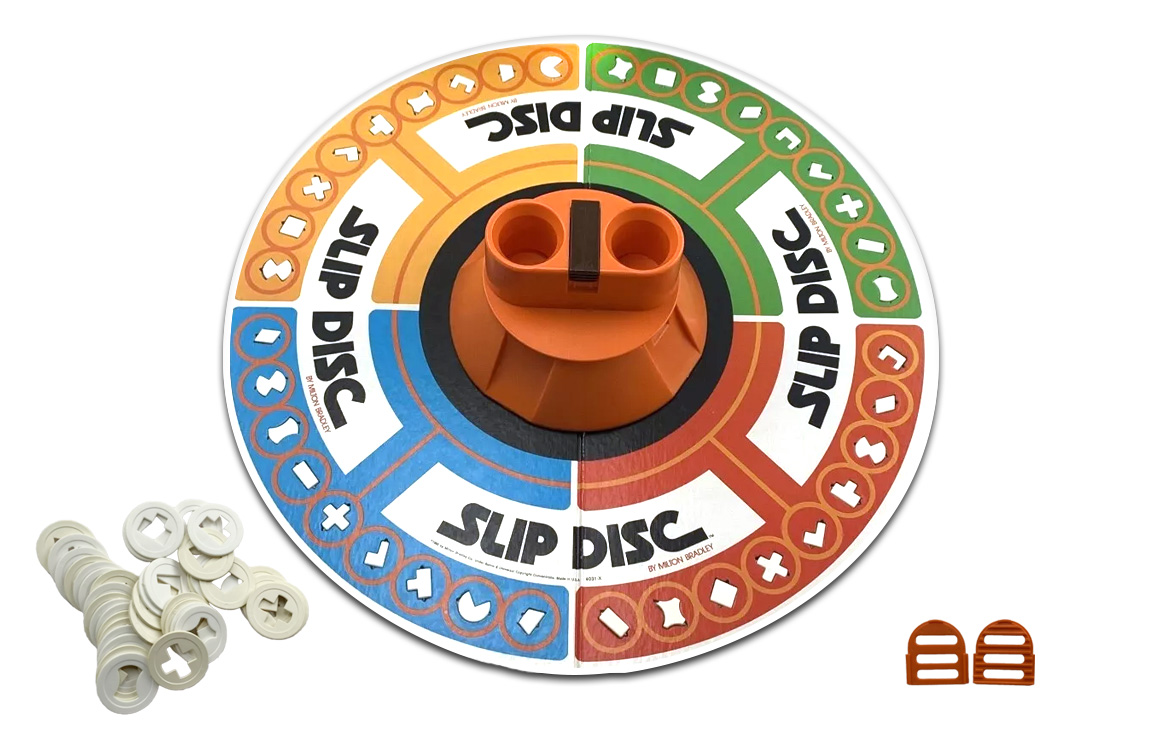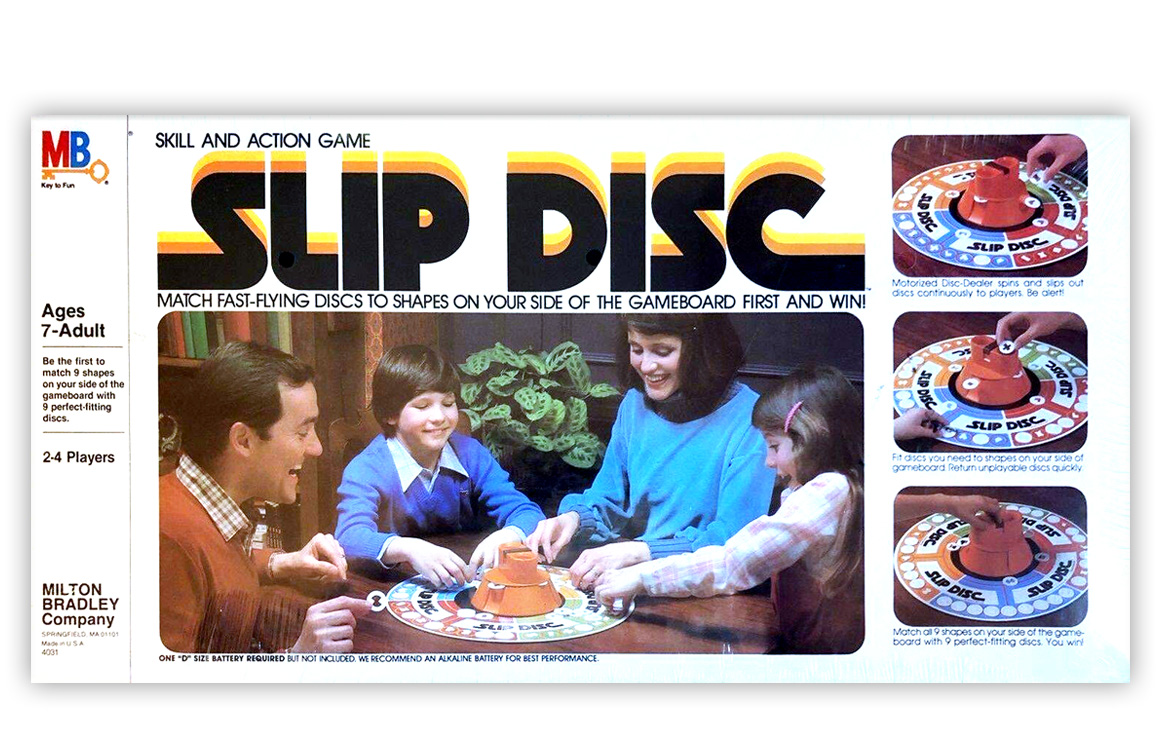Published by Milton Bradley in 1980, Slip Disc was billed as an exciting skill and action game that pit players against each other in a race for the win.
GAMEPLAY
The goal of the game was to match nine discs to the corresponding shapes on the game board.
The board was visually divided into quadrants: red, yellow, blue, and green. Each player chose a section for the game.
The battery-operated disc dealer was placed at the centre of the board and positioned so its four chutes aligned with the quadrants. The 40 plastic discs were loaded into the disc dealer through two loading tubes at the top of the unit. The discs were die-cut with nine different shapes that corresponded to those on a strip in each quadrant of the game board.
A player switched the disc dealer to the “ON” position. Discs were distributed through the chutes as the mechanism rotated. Players simultaneously raced to match the shapes that landed in their quadrant with the shapes on the strip in front of them. When a match was identified, players snapped the disc onto the strip.
Tension grew as the game progressed and shapes were successfully matched, leaving players to anxiously await the final discs needed to win the game. Discs that were already matched were placed back into the disc dealer.
The winner of the game was the first to complete their strip by placing the matching discs.
VARIANTS
For a two-player game, two adapters could be slid into the chutes to block discs from dropping from all four chutes.
Variants on the instructions allowed for a four-round game, using a point system to determine the winner. The instructions also outlined a tournament-style game for four players in which the low-scoring players from rounds one and two exited the game, and the third and fourth rounds continued with two players in a battle for the high score.
IN THE BOX
A complete game included the game board, motorized disc dealer, 40 plastic discs, two chute adapters, and four plastic strips of nine shapes to be affixed to the game board. Instructions were printed inside the box cover. A required D-cell battery was not included.
COLLECTOR CONSIDERATIONS
Board games with motorized components offer a high-tech element, but those components make it tricky to find vintage games in perfect working order. Mechanisms degraded over time and battery compartments often corroded if the battery was left inside the chamber.
Note: If you buy something using the eBay link in this story, we may earn a small commission. Thank you for supporting independent toy journalism!


